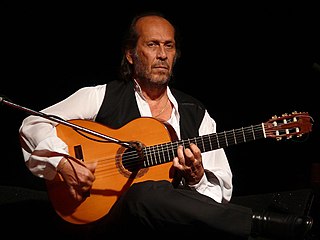 W
WThe Bienal de Flamenco is celebrated in Seville, Spain, in different theatres of the city. This festival features dancers, vocalists, and guitarists direct from Spain in a display ranging from flamenco puro to innovative new works.
 W
WBolero is a Spanish dance in 3/4 time popular in the late 18th and early 19th centuries. It originated from the seguidilla sometime between 1750 and 1772, and it became very popular in Madrid, La Mancha, Andalusia and Murcia in the 1780s. Bolero was performed as a solo or partner dance with a moderately slow tempo, accompanied by guitar and castanets, and with lyrics in the form of the seguidilla.
 W
WBulería is a fast flamenco rhythm made up of a 12 beat cycle with emphasis in two general forms as follows:
 W
WCachucha is a Spanish solo dance in 34 or 38 time, similar to the bolero. Cachucha is danced to an Andalusian national song with castanet accompaniment.
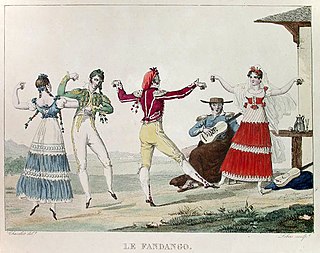 W
WFandango is a lively couples dance originating from Portugal and Spain, usually in triple metre, traditionally accompanied by guitars, castanets, or hand-clapping. Fandango can both be sung and danced. Sung fandango is usually bipartite: it has an instrumental introduction followed by "variaciones". Sung fandango usually follows the structure of "cante" that consist of four or five octosyllabic verses (coplas) or musical phrases (tercios). Occasionally, the first copla is repeated.
 W
WFlamenco, in its strictest sense, is an art form based on the various folkloric music traditions of southern Spain, developed within the gitano subculture of the region of Andalusia, but also having a historical presence in Extremadura and Murcia. In a wider sense, it is a portmanteau term used to refer to a variety of both contemporary and traditional musical styles typical of southern Spain. Flamenco is closely associated to the gitanos of the Romani ethnicity who have contributed significantly to its origination and professionalization. However, its style is uniquely Andalusian and flamenco artists have historically included Spaniards of both gitano and non-gitano heritage.
 W
WThe jota is a genre of music and the associated dance known throughout Spain, most likely originating in Aragon. It varies by region, having a characteristic form in Aragon, Catalonia, Castile, Navarre, Cantabria, Asturias, Galicia, La Rioja, Murcia and Eastern Andalusia. Being a visual representation, the jota is danced and sung accompanied by castanets, and the interpreters tend to wear regional costumes. In Valencia, the jota was once danced during interment ceremonies.
 W
WMatachines are a carnavalesque dance troupe which emerged in Spain in the early 17th century inspired by similar European traditions such as the moresca. The term danza de matachines is also used to refer to their characteristic dance and music. The dance was documented in the 1642 treatise Discursos sobre el arte del dançado by Juan de Esquivel Navarro. The tradition was imported into Latin American countries such as Mexico and Peru.
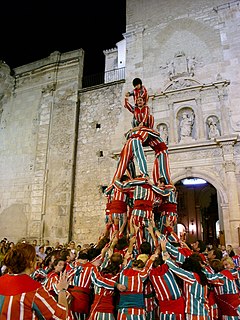 W
WThe Muixeranga is the collective name given to the performance of ancient street dances and human pyramids or castells, originating in the ancient Kingdom of Valencia, which are still preserved in the town of Algemesí, 30 km (19 mi) southwest from Valencia, and certain other Valencian towns.
 W
WPasodoble is a fast-paced Spanish military march used by infantry troops. Its speed allowed troops to give 120 steps per minute. This march gave rise to a traditional Spanish dance, a musical genre including both voice and instruments, and a genre of instrumental music often played during bullfight. Both the dance and the non martial compositions are also called pasodoble.
 W
WThe saeta is a revered form of Andalusian religious song, whose form and style has evolved over many centuries. Saetas evoke strong emotion and are sung most often during public processions.
 W
WThe sarabande is a dance in triple metre, or the music written for such a dance.
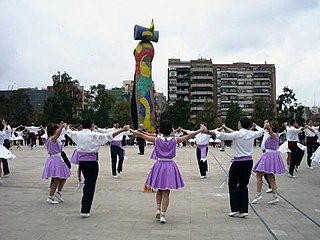 W
WThe sardana is a musical genre typical of Catalan culture and danced in circle following a set of steps. The dance was originally from the Empordà region, but started gaining popularity throughout Catalonia from the late 19th century to beginning of the 20th century after the modernisation done by Josep Maria Ventura i Casas.
 W
WThe seguidilla is an old Castilian folksong and dance form in quick triple time for two people with many regional variations. The music is generally in a major key and often begins on an offbeat.
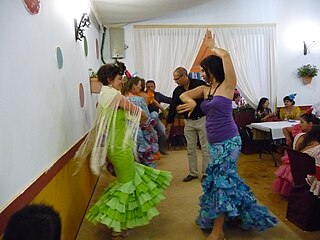 W
WSevillanas are a type of folk music and dance of Sevilla and its region. They were derived from the Seguidilla, an old Castilian folk music and dance genre. In the nineteenth century they were influenced by Flamenco. They have a relatively limited musical pattern but are rich in lyrics based on country life, virgins, country towns, neighborhoods, pilgrimage, and love themes. They are sung by a plethora of local groups, like the Los Romeros de la Puebla, Los Amigos de Gines, Las Corraleras de Lebrija, Cantores de Hispalis, and Los del Río. Every year, dozens of new sevillanas on CD are published.
 W
WSoleares is one of the most basic forms or palos of Flamenco music, probably originating among the Calé Romani people of Cádiz or Seville in Andalusia, the most southern region of Spain. It is usually accompanied by one guitar only, in phrygian mode "por arriba" ; "Bulerías por soleá" is usually played "por medio". Soleares is sometimes called "mother of palos" although it is not the oldest one and not even related to every other palo
 W
WThe Spanish Dances are a collection of eight pieces for violin and piano composed by Pablo de Sarasate between 1877 and 1882 and published in four books, each book combining two dances contrasting in rhythm and character. They are among Sarasate's best known works.
 W
WThe trikiti trikitixa, or eskusoinu txiki ) is a two-row Basque diatonic button accordion with right-hand rows keyed a fifth apart and twelve unisonoric bass buttons. The onomatopoeia trikitixa, apparently stemming from the sound emitted by the tambourine, originally referred to a traditional Basque ensemble, made up of the instrument which now bears the name as well as alboka, txistu and other instruments.